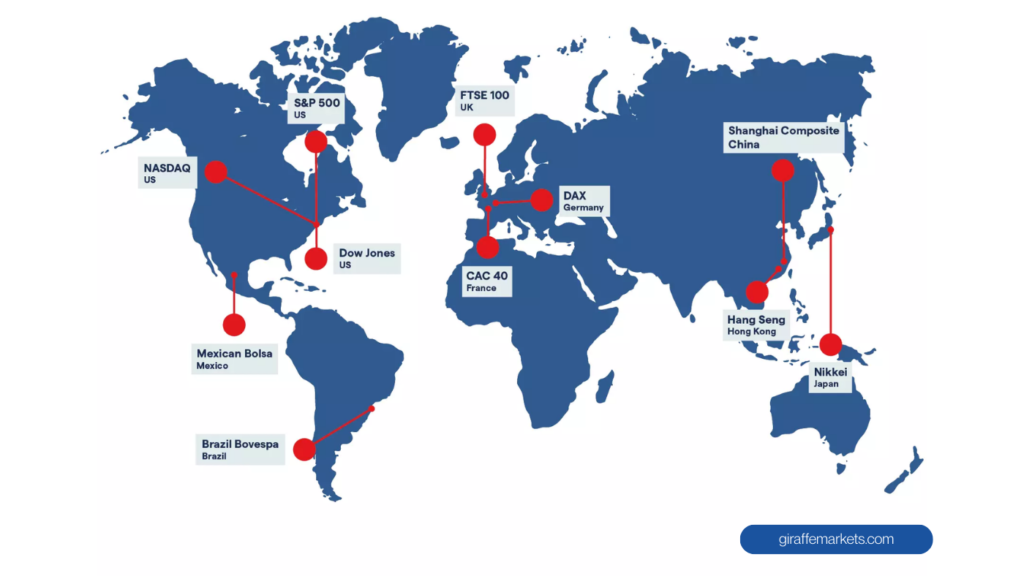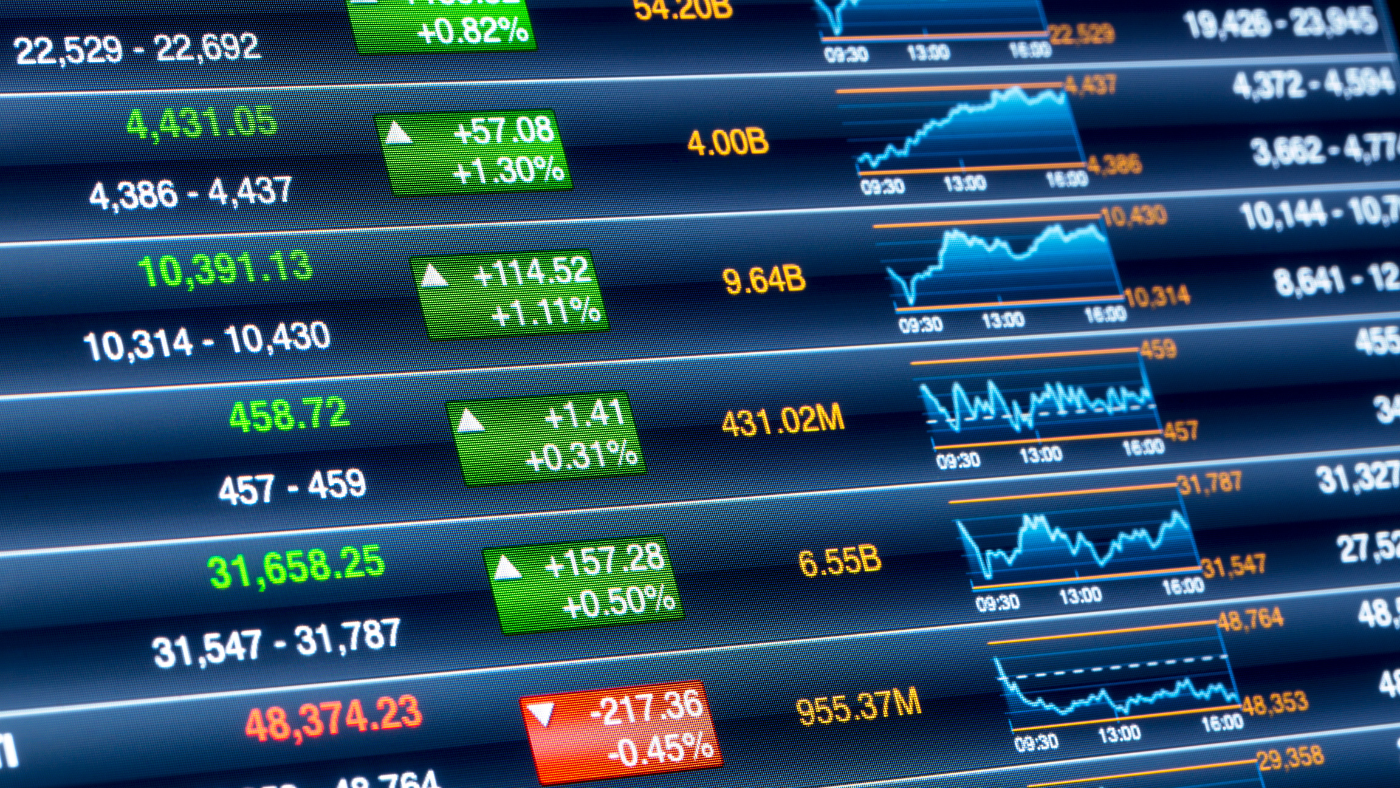Understanding Indices
An index tracks the performance of a basket of stocks. Here are some of the most popular global indices:
- S&P 500: Represents the 500 largest publicly traded companies in the United States.
- Dow Jones Industrial Average (DJIA): Tracks 30 large, blue-chip US companies.
- NASDAQ 100: Covers the 100 largest non-financial companies listed on NASDAQ, with a heavy focus on tech.
- FTSE 100: Tracks the 100 largest companies listed on the London Stock Exchange.
- DAX (Germany 40): Monitors the 40 largest and most liquid German companies on the Frankfurt Exchange.
- Nikkei 225: A price-weighted index of 225 top Japanese companies on the Tokyo Stock Exchange.

Why Trade Indices?
- Diversification: Get exposure to an entire market or sector with one trade, reducing single-stock risk.
- Leverage: Control larger positions with less capital (note: leverage can magnify both gains and losses).
- Go Long or Short: Profit in rising or falling markets, depending on your position.
- Cost-Effective: Lower transaction costs compared to building a diversified portfolio of individual stocks.
How to Trade Indices Online
You don’t trade indices directly—you trade instruments based on their value:
- Contracts for Difference (CFDs): Speculate on price movements without owning the underlying asset. Learn more about CFDs with Giraffe Markets.
- Index Futures: Trade contracts based on future price expectations of the index.
- Exchange-Traded Funds (ETFs): Indirectly invest in an index by buying shares of an ETF that tracks it.
Choosing an Indices Trading Platform
The trading platform is your gateway to the market. Look for platforms that offer:
- User-Friendly Interface: Especially important for beginners. Giraffe Markets offers an intuitive platform with MetaTrader 5.
- Real-Time Data and Charts: Access to live prices and advanced charting tools.
- Order Types: Ensure support for market, limit, stop-loss, and take-profit orders.
- Mobile Trading: Trade on the go with mobile apps. Explore Giraffe Markets Mobile.
- Educational Resources: Learn as you go. Giraffe Markets offers free trading education.
Risk Management in Index Trading
- Stop-Loss Orders: Always use these to limit potential losses.
- Position Sizing: Avoid risking too much capital on a single trade.
- Understand Leverage: Know how it can amplify both profits and losses.
- Stay Informed: Monitor economic news and events that influence markets.
Recent Forex Indices Analysis (as of April 10, 2025)
Global stock indices are currently experiencing volatility due to concerns over trade tariffs and broader economic impacts.
US Indices (S&P 500, Dow Jones, NASDAQ)
Recently declined after tariff announcements, especially those targeting China. Markets show signs of cautious recovery.
European Indices (FTSE 100, DAX)
Dropped in tandem with US markets but could rebound. Eurozone outlook and ECB policies remain key.
Asian Indices (Nikkei 225, Hang Seng)
Mixed performance. Nikkei shows resilience, while Hang Seng remains vulnerable due to trade-related sector stress.
Key Factors to Watch
- Trade Policy Developments: New tariffs or trade deals can shake markets.
- Economic Data Releases: Watch for inflation, employment, and GDP numbers.
- Central Bank Policies: Statements and rate changes affect global liquidity.
- Geopolitical Events: Unforeseen crises can create sudden volatility.
Disclaimer: This is a general analysis as of April 10, 2025, and should not be considered financial advice. Always do your own research before making trading decisions.
FAQs on Indices Trading
What are indices?
Benchmarks that measure the performance of a group of stocks in a market or sector.
How are indices traded?
Via instruments like CFDs, futures, and ETFs.
What affects index prices?
Economic news, company earnings, currency movements, geopolitical events, and investor sentiment.
Is index trading risky?
Yes. Especially with leverage. Use risk management tools and trade wisely.
What is leverage in index trading?
Leverage lets you control large positions with less capital (e.g., 1:100 leverage means $100 can control $10,000).
What are trading hours for indices?
They vary by index and broker but generally align with the stock exchange hours.
Can I start with low capital?
Yes. With instruments like CFDs and fractional lots, you can begin with a modest amount. Visit Giraffe Markets Account Types to get started.
If you have been into the FX trading market for quite a while but you haven’t yet started using a comprehensive platform for financial markets, we suggest practicing with a demo account first. With a Giraffe Markets demo account, you can gauge real market conditions without financial risk, hone your strategies and understand market dynamics to become an expert trader sooner or later.
Follow us on Facebook, Instagram, Twitter, Linkedin, Reddit, YouTube, Quora, Threads, and Tiktok for more daily updates.
